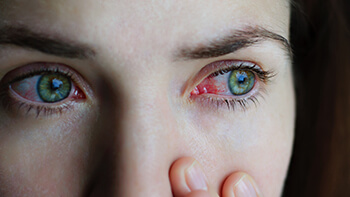
Conjunctivitis is the term used by eye doctors to describe inflammation of the conjunctiva. The conjunctiva includes both the clear coating over the white part of the eye and the pink lining of the underneath of the eyelids. In ordinary terms, conjunctivitis is simply the most common cause of red or “pink” eye.
Conjunctivitis may be caused by a viral, bacterial, fungal, or allergic infection. It can also be caused by environmental irritants like smoke, fumes, or chemicals. Depending on the cause it can produce varying symptoms and can occur in one or both eyes.
Some cases of bacterial or viral conjunctivitis are contagious and are easily spread to others. Common ways of spreading it can be coming into contact with the affected person’s tears through tissues or handkerchiefs but can also be spread by use of shared items like cell phones, tablets, keyboards, or TV remotes. Frequent handwashing with warm soapy water is the best way to combat the spread of the infection.
Each cause of conjunctivitis is managed differently. Your doctor can tell a lot about the cause of the condition just by examining your eyes and inquiring about the symptoms. It is important to seek care with your eye doctor so that conjunctivitis can be managed and treatment started if appropriate.







